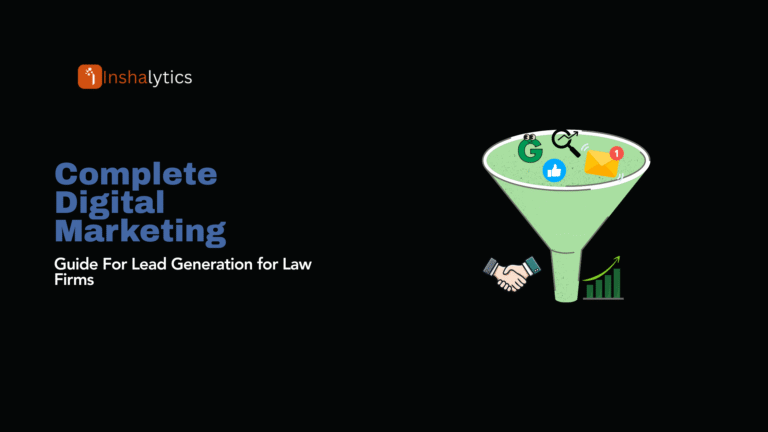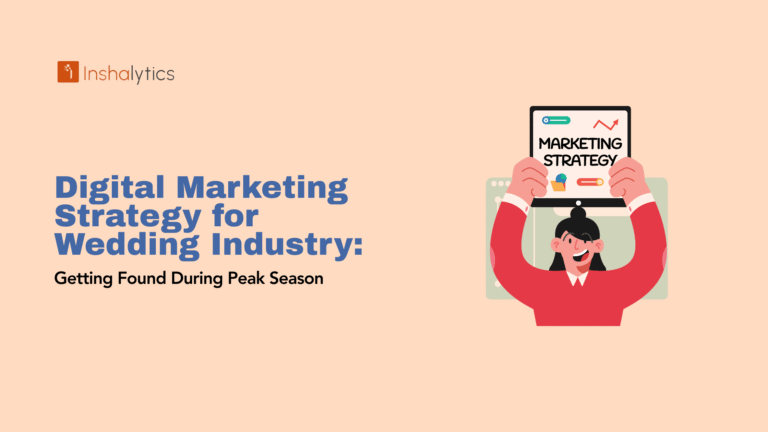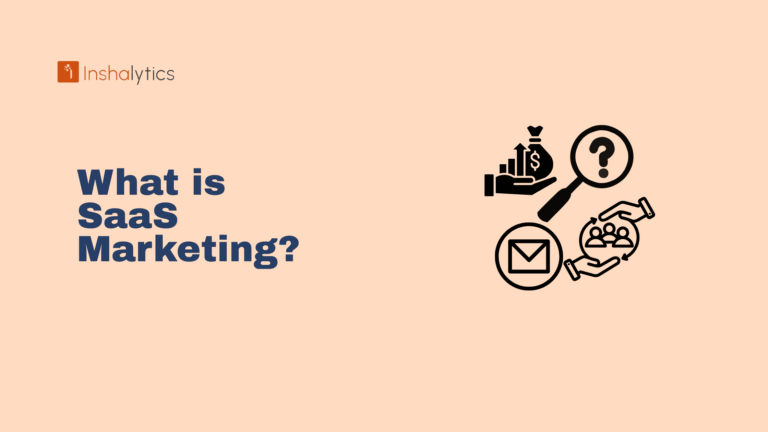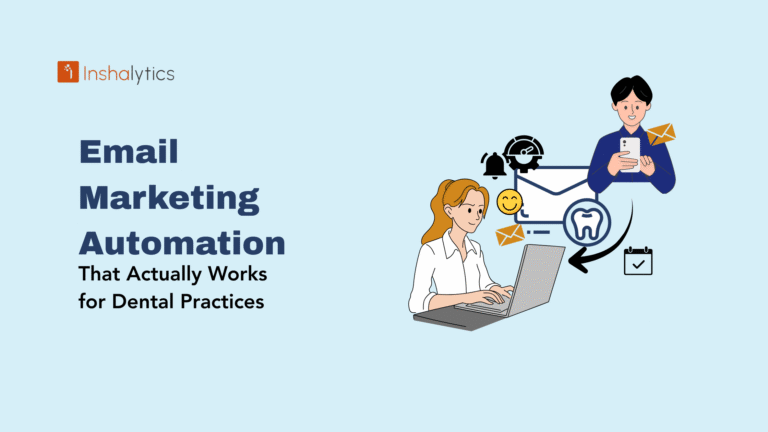Rising costs, inflation, and increased operational expenses are forcing small business owners to face an uncomfortable reality: price increases are often necessary for survival. Yet, 42% of businesses report they haven’t passed on rising costs to customers, often due to fear of losing their customer base.
The good news? Psychological pricing strategies can help you increase prices strategically while maintaining customer loyalty and even improving perceived value. This comprehensive guide reveals how small businesses can leverage pricing psychology to boost revenue without driving customers away.
What is Pricing Psychology?
Pricing psychology, also known as psychological pricing, is a strategic approach that uses human behavioral patterns and cognitive biases to influence purchasing decisions. Rather than setting prices based purely on costs or competitor analysis, psychological pricing considers how customers perceive and respond to different price points.
For small businesses, this approach is particularly powerful because it levels the playing field against larger competitors. While you may not be able to match corporate pricing through economies of scale, you can use psychological principles to make your prices feel more attractive and justify higher margins.
The Science Behind Consumer Price Perception
Consumer price perception isn’t rational it’s emotional and psychological. Research in behavioral economics shows that customers don’t evaluate prices in isolation. Instead, they rely on mental shortcuts and comparisons that can be influenced through strategic pricing.
Key psychological factors that affect price perception include:
- Left-digit bias: Customers focus more on the first digit of a price, making $9.99 feel significantly cheaper than $10.00
- Anchoring effect: The first price a customer sees becomes their reference point for all subsequent prices
- Loss aversion: People feel the pain of losing money twice as strongly as the pleasure of gaining it
- Social proof: Customers assume popular or premium-priced items must be better quality
Why Small Businesses Need Psychological Pricing Strategies?
Small businesses face unique challenges that make psychological pricing essential:
Limited pricing power: Unlike large corporations, small businesses can’t always compete on price alone. Psychological pricing helps maximize revenue from each customer interaction.
Personal relationships matter more: Your customers often know you personally, making transparent and ethical pricing strategies crucial for maintaining trust.
Higher cost per acquisition: Every customer loss hurts more in a small business, making retention-focused pricing strategies vital.
Flexibility advantage: Small businesses can implement pricing changes faster than large corporations, allowing for more agile psychological pricing tactics.
Common Pricing Mistakes That Drive Customers Away
Before implementing psychological pricing strategies, avoid these critical mistakes:
- Unexplained price jumps: Sudden, large price increases without communication breed distrust
- Inconsistent pricing: Different prices across channels confuse customers and damage credibility
- Competing solely on price: This creates a race to the bottom that’s impossible to win long-term
- Ignoring value communication: Price increases without demonstrating additional value feel arbitrary to customers
8 Proven Psychological Pricing Strategies for Small Businesses
1. Charm Pricing: The Power of .99 Endings
Charm pricing involves setting prices just below round numbers (e.g., $19.99 instead of $20.00). This strategy exploits the left-digit bias, where customers focus on the first number and perceive the price as significantly lower.
How to implement:
- End prices in 9, 95, or 97 for maximum impact
- Use charm pricing for price-sensitive products or services
- Consider your brand positioning luxury brands often avoid charm pricing
Small business example: A local bakery increased sales by 23% when they changed their custom cake pricing from $45.00 to $44.99, despite the minimal actual discount.
2. Price Anchoring: Setting Reference Points
Price anchoring involves presenting a high-priced option first to make subsequent options appear more reasonable. The first price becomes the “anchor” that influences all other price perceptions.
Implementation strategies:
- Lead with your premium service or product offering
- Show original prices alongside sale prices
- Use competitor comparisons to anchor your value proposition
Small business application: A consulting firm starts client presentations with their comprehensive package at $5,000, making their standard $2,500 package feel like an excellent value.
3. Decoy Pricing: Guiding Customer Choices
Decoy pricing introduces a strategically inferior option that makes your preferred offering look more attractive. The decoy is priced to push customers toward a specific choice.
How it works:
- Create three pricing tiers: basic, premium, and decoy
- Price the decoy close to the premium option but with fewer features
- Most customers will choose the premium option for “just a little more”
Example: A web design agency offers:
- Basic website: $1,500
- Premium website: $3,000
- Business website (decoy): $2,800 (with fewer features than premium)
Result: 70% of customers choose the premium option.
4. Bundle Pricing: Increasing Perceived Value
Bundle pricing combines multiple products or services at a discounted rate compared to purchasing items individually. This strategy increases transaction value while providing customers with perceived savings.
Effective bundling tactics:
- Combine high-margin items with popular products
- Clearly show the individual price vs. bundle savings
- Create themed bundles that solve complete problems
Small business success story: A fitness studio increased average revenue per customer by 40% by bundling personal training sessions with nutritional consulting at a 15% discount.
5. Tiered Pricing: Creating Options for Every Budget
Tiered pricing offers multiple service or product levels, allowing customers to choose based on their needs and budget while maximizing revenue from different customer segments.
Best practices:
- Limit to 3-4 tiers to avoid decision paralysis
- Make each tier clearly differentiated
- Position the middle tier as the “most popular” choice
Implementation tip: Name your tiers descriptively (Starter, Professional, Enterprise) rather than generically (Basic, Standard, Premium).
6. Odd-Even Pricing: Quality vs. Value Signals
Odd-numbered prices (ending in 1, 3, 5, 7, 9) suggest value and discounts, while even-numbered prices (ending in 0, 2, 4, 6, 8) imply quality and prestige.
Strategic applications:
- Use odd pricing for promotional or value-focused offerings
- Use even pricing for premium or luxury items
- Consider your target market’s priorities when choosing
7. Limited-Time Pricing: Creating Urgency Without Manipulation
Scarcity and urgency can motivate purchases, but they must be used ethically to maintain customer trust.
Ethical urgency tactics:
- Genuine limited-time offers with real expiration dates
- Seasonal pricing that reflects actual business cycles
- Early bird discounts for advance bookings
Warning: Avoid fake countdown timers or constantly “extended” deadlines, as these damage long-term trust.
8. Prestige Pricing: When Higher Prices Signal Quality
For luxury or premium positioning, higher prices can actually increase demand by signaling superior quality.
When to use prestige pricing:
- Your product/service has clear quality differentiators
- You’re targeting affluent market segments
- Competition is primarily on quality, not price
How to Increase Prices Without Losing Customers?
Step 1: Analyze Your Current Customer Base and Price Sensitivity
Before implementing any price increases, understand your customers’ price sensitivity and value perception.
Research methods:
- Survey existing customers about price vs. value perception
- Analyze customer behavior data for price sensitivity patterns
- Conduct competitor analysis to understand market positioning
- Review customer support tickets for price-related complaints
Key questions to answer:
- Which customers are most/least price-sensitive?
- What aspects of your service do customers value most?
- How do your prices compare to competitors?
- Which customer segments generate the highest lifetime value?
Step 2: Choose the Right Pricing Strategy for Your Business
Select psychological pricing strategies based on your business model, customer base, and market position.
Service businesses: Focus on value-based pricing, bundling, and tiered options
Product businesses: Leverage charm pricing, anchoring, and seasonal strategies
B2B businesses: Emphasize bundling, decoy pricing, and annual contracts
B2C businesses: Use charm pricing, limited-time offers, and social proof
Step 3: Communicate Price Changes Transparently
Transparency builds trust and reduces customer churn during price increases.
Communication best practices:
- Provide 60-90 days’ advance notice for significant increases
- Explain the business reasons behind price changes
- Highlight improvements or added value
- Offer grandfathering options for long-term customers
- Use multiple communication channels (email, phone, in-person)
Sample communication framework:
- Acknowledge the change: “We’re writing to inform you of upcoming pricing adjustments.”
- Explain the reasoning: “Rising material costs and expanded service offerings require this adjustment.”
- Emphasize value: “This allows us to continue providing the quality service you expect.”
- Show appreciation: “We value your continued partnership and loyalty.”
- Provide options: “Existing customers can renew at current rates through [date]”
Step 4: Time Your Price Increases Strategically
Timing can significantly impact customer acceptance of price changes.
Optimal timing strategies:
- Contract renewals: Natural points for price adjustments
- Beginning of fiscal years: Customers expect budget changes
- After service improvements: When you’ve added clear value
- Industry-wide increases: When competitors are also raising prices
- Seasonal peaks: When demand is naturally higher
Avoid these timing mistakes:
- During customer financial stress periods
- Immediately after service problems
- During competitive threats
- Around major holidays or customer busy seasons
Step 5: Add Value Before Raising Prices
Demonstrate additional value to justify price increases and reduce resistance.
Value-addition strategies:
- Introduce new features or services
- Improve product quality or service delivery
- Enhance customer support options
- Provide additional resources or tools
- Extend service guarantees or warranties
Small Businesses Successfully Using Pricing Psychology
Service-Based Business Example: Local Marketing Agency
Challenge: A 12-person digital marketing agency needed to increase prices by 25% due to rising talent costs and expanded service offerings.
Strategy implemented:
- Price anchoring: Introduced a premium “Growth Accelerator” package at $8,000/month
- Tiered pricing: Restructured services into three clear tiers
- Bundle pricing: Combined social media, content, and PPC services
- Value communication: Highlighted new AI tools and senior staff additions
Results:
- 18% increase in average contract value
- Only 8% customer churn (well below the anticipated 15%)
- 35% of new clients chose the premium tier
- Customer satisfaction scores increased due to clearer service definitions
Product-Based Business Example: Boutique Retail Store
Challenge: A women’s clothing boutique faced inventory cost increases of 30% and needed to maintain margins without losing customers.
Strategy implemented:
- Charm pricing: Shifted from round numbers ($50) to $49.99 pricing
- Anchoring: Displayed original prices alongside sale prices
- Bundle deals: “Buy 2, get 3rd item 50% off” promotions
- Seasonal urgency: Limited-time collections with genuine scarcity
Results:
- Maintained gross margins despite cost increases
- 22% increase in average transaction value
- Improved inventory turnover by 28%
- Customer retention rate increased to 78%
Subscription Business Example: SaaS Startup
Challenge: A project management software company needed to transition from freemium to paid tiers as their user base grew.
Strategy implemented:
- Decoy pricing: Created a middle tier that made the premium option attractive
- Grandfathering: Offered existing free users 50% off for 6 months
- Annual anchoring: Showed monthly vs. annual pricing savings
- Feature bundling: Combined related features into logical tiers
Results:
- 34% conversion rate from free to paid
- 67% of converting users chose annual plans
- Average revenue per user increased by 180%
- Churn rate remained under 5% monthly
Common Pitfalls to Avoid When Implementing Psychological Pricing
Avoiding Deceptive Practices
Psychological pricing should influence, not deceive. Maintain ethical standards to preserve long-term customer relationships.
Red flags to avoid:
- Inflating “original” prices to create fake discounts
- Using false scarcity tactics (fake countdown timers)
- Hiding fees or charges in small print
- Making price comparisons to inferior competitors
- Constantly changing prices to confuse customers
Maintaining Customer Trust
Trust is the foundation of successful psychological pricing. Once lost, it’s difficult to rebuild.
Trust-building practices:
- Be transparent about pricing changes and reasons
- Honor quoted prices and promotional terms
- Provide clear, detailed invoicing
- Respond promptly to pricing questions or concerns
- Maintain consistent pricing across all channels
Legal Considerations for Price Increases
Different jurisdictions have varying regulations about pricing practices and customer notifications.
Legal compliance areas:
- Contract terms: Review existing agreements for price change clauses
- Consumer protection: Understand local laws about price advertising
- B2B regulations: Know industry-specific pricing requirements
- Fee disclosure: Some regions require upfront fee disclosure
- Data protection: Ensure pricing communications comply with privacy laws
Recommendation: Consult with a business attorney familiar with your industry and location before implementing significant pricing changes.
Measuring Success: How to Track the Impact of Your Pricing Changes
Key Metrics to Monitor
Track these essential metrics to evaluate your psychological pricing strategies:
Revenue metrics:
- Average revenue per customer (ARPC)
- Total revenue growth
- Profit margin improvements
- Customer lifetime value (CLV)
Customer metrics:
- Customer acquisition cost (CAC)
- Churn rate and retention
- Net Promoter Score (NPS)
- Customer satisfaction ratings
Pricing-specific metrics:
- Price acceptance rate
- Conversion rates by pricing tier
- Bundle vs. individual product sales
- Seasonal pricing effectiveness
A/B Testing Your Pricing Strategies
Systematic testing helps optimize your psychological pricing approach.
Testing methodologies:
Split testing: Show different prices to comparable customer segments
Time-based testing: Implement changes sequentially and compare results
Geographic testing: Test different strategies in different markets
Customer type testing: Use different approaches for new vs. existing customers
Sample A/B test framework:
- Hypothesis: “Charm pricing will increase conversion rates by 15%”
- Variables: Test $19.99 vs. $20.00 pricing
- Sample size: Ensure statistical significance (typically 1,000+ visitors per variant)
- Duration: Run for full business cycles (2-4 weeks minimum)
- Analysis: Compare conversion rates, revenue, and customer feedback
Customer Feedback and Retention Analysis
Qualitative feedback provides context for quantitative results.
Feedback collection methods:
- Post-purchase surveys about pricing perception
- Customer interview focused on value vs. price
- Support ticket analysis for price-related concerns
- Social media monitoring for pricing discussions
- Focus groups with different customer segments
Advanced Pricing Psychology Techniques for Growing Small Businesses
Dynamic Pricing Strategies
As your business grows, consider more sophisticated pricing approaches.
Dynamic pricing applications:
- Seasonal adjustments: Higher prices during peak demand periods
- Capacity-based pricing: Premium rates when availability is limited
- Customer-based pricing: Different rates based on customer value
- Time-based pricing: Off-peak discounts to balance demand
Implementation considerations:
- Start with simple seasonal adjustments
- Ensure customers understand the pricing logic
- Use technology tools to manage complexity
- Monitor competitor responses
Personalized Pricing Approaches
Tailor pricing to individual customer segments for maximum effectiveness.
Segmentation strategies:
- New vs. returning customers: Welcome discounts vs. loyalty premiums
- Purchase history: Volume discounts for frequent buyers
- Geographic: Regional pricing based on local market conditions
- Industry: B2B pricing based on client industry and budget
Technology requirements:
- Customer relationship management (CRM) system
- Purchase history tracking
- Automated pricing rule engines
- Customer communication automation
Seasonal and Event-Based Pricing
Leverage natural business cycles and events for strategic pricing.
Seasonal opportunities:
- Holiday premium pricing for gift-related products
- Back-to-school promotions for education-related services
- End-of-year budget spending in B2B markets
- Summer/winter seasonal service adjustments
Event-based pricing:
- Conference and trade show promotions
- Local community event tie-ins
- Industry-specific calendar events
- Economic cycle adjustments
Tools and Resources for Implementing Psychological Pricing
For small businesses (under $1M revenue):
- ProfitWell: Free price optimization and subscription analytics
- Price Intelligently: Pricing strategy consulting and tools
- Paddle: Subscription billing with psychological pricing features
- Chargebee: Recurring billing with A/B testing capabilities
For growing businesses ($1M-$10M revenue):
- Prisync: Competitive pricing monitoring
- Revenue Management Solutions: Advanced pricing analytics
- Zuora: Enterprise subscription management
- Salesforce CPQ: Configure, price, quote automation
Free tools and calculators:
- Google Analytics for conversion tracking
- Excel/Google Sheets pricing templates
- Social media listening tools for customer feedback
- Survey tools like SurveyMonkey or Typeform
Market Research Techniques
Primary research methods:
- Customer surveys about price sensitivity
- Focus groups on value perception
- One-on-one customer interviews
- Purchase behavior analysis
Secondary research sources:
- Industry pricing reports
- Competitor websites and marketing materials
- Trade association publications
- Economic research on your target market
Research budget allocation:
- Allocate 2-5% of revenue for ongoing market research
- Focus spending on your highest-value customer segments
- Combine DIY research with professional studies
- Invest in annual comprehensive pricing reviews
Templates for Customer Communication
Price increase announcement email template:
Subject: Important Update About Our Services and Pricing
Dear [Customer Name],
We hope this message finds you well and that our [product/service] continues to provide value to your [business/personal needs].
After careful consideration, we’re implementing a pricing adjustment effective [date], which will be reflected in your [next billing cycle/renewal]. This represents our first price increase in [time period] and allows us to continue delivering the quality service you’ve come to expect while investing in new features and improvements.
Here’s what’s changing:
– [Current service]: From $X to $Y per month
– [Additional services if applicable]
Why we’re making this change:
– Rising costs of [specific business inputs]
– Significant investments in [new features/staff/technology]
– Enhanced service offerings, including [specific improvements]
What this means for you:
– Continued access to all current features and services
– [New benefits or improvements you’ll receive]
– No changes to your current contract terms
We value your partnership and wanted to provide ample notice of this change. If you have any questions or concerns, please don’t hesitate to reach out to me directly at [contact information].
As a valued customer, you have the option to renew your current plan at existing rates if you commit to an annual contract by [date].
Thank you for your continued trust and partnership.
Best regards,
[Your Name]
[Title]
[Contact Information]
Customer retention conversation script:
“I understand your concern about the pricing change, and I appreciate you taking the time to discuss this with me. Let me explain the thinking behind this adjustment and explore options that might work better for you.
First, this is our first increase in [time period], and it’s driven by [specific business reasons]. More importantly, this investment allows us to [specific value additions].
I’d like to understand what aspects of our service are most valuable to you, so we can explore whether there’s a different package or arrangement that better fits your needs and budget.
Would you be open to discussing some alternatives that might work better for your situation?”
Conclusion: Building a Sustainable Pricing Strategy
Implementing psychological pricing strategies isn’t about tricking customers it’s about presenting your value proposition in the most compelling way possible. When done ethically and strategically, these techniques help small businesses:
- Increase revenue without proportional customer loss
- Communicate value more effectively
- Compete against larger companies with better resources
- Build sustainable pricing models for long-term growth
Key takeaways for small business owners:
- Start with understanding: Research your customers’ price sensitivity and value perceptions before implementing changes
- Choose appropriate strategies: Select psychological pricing techniques that align with your business model and customer base
- Communicate transparently: Build trust through honest communication about pricing changes and their justifications
- Test and optimize: Use data-driven approaches to refine your pricing strategies over time
- Focus on value: Always ensure that price increases are supported by genuine value improvements




